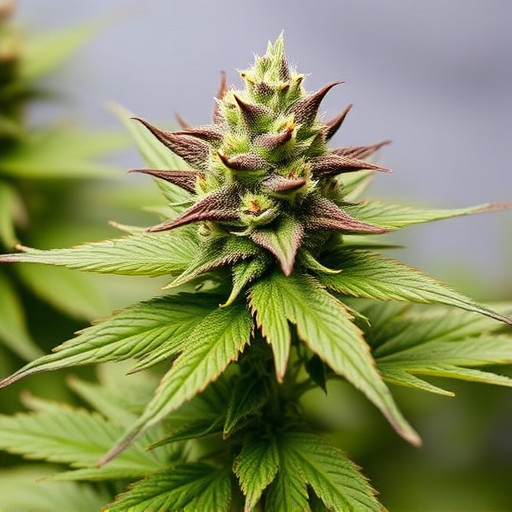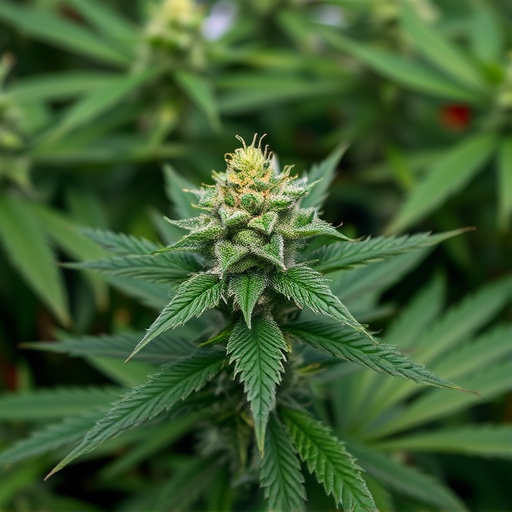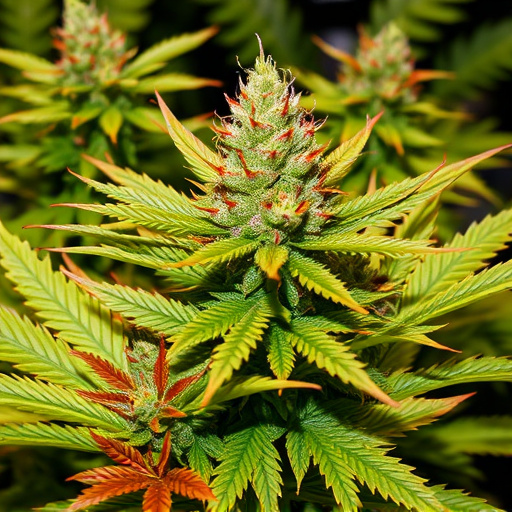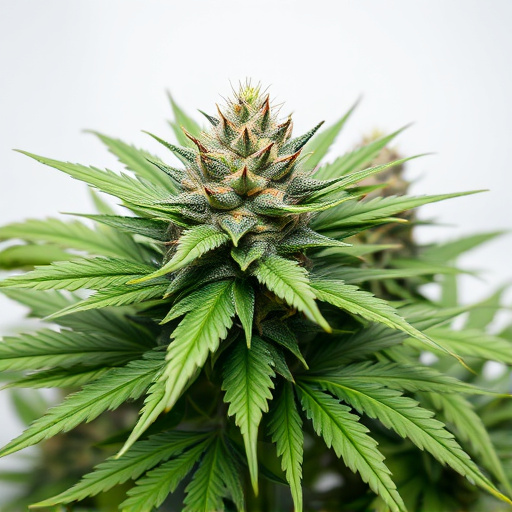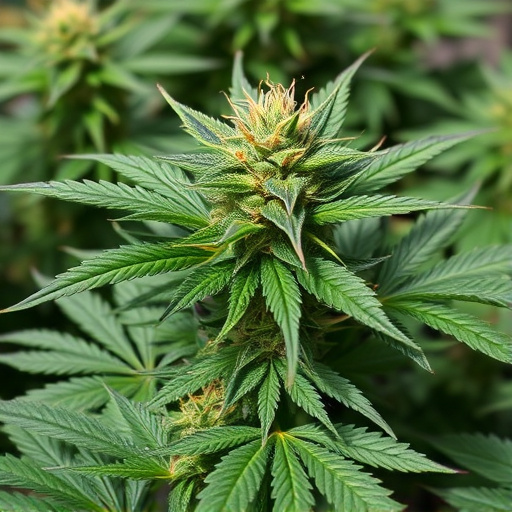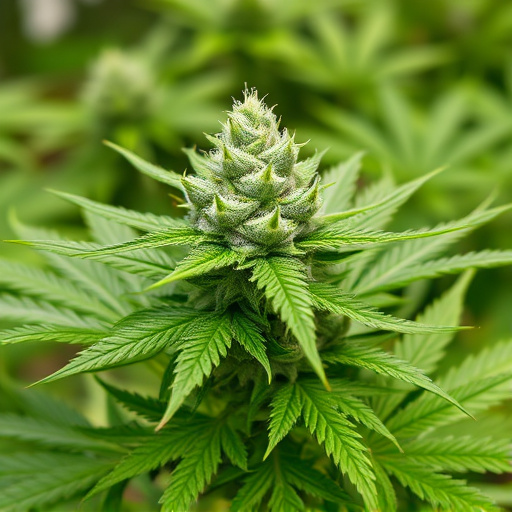Sativa cannabis strains, characterized by high THC levels, exert significant physiological effects on users, impacting brain, nervous system, endocrine system, and cardiovascular health. While offering benefits like heightened creativity and energy, chronic use can lead to anxiety, paranoia, dry mouth, red eyes, and increased heart rate. Responsible consumption involves starting with low doses, choosing strains suitable for individual needs, and taking regular breaks.
“Unraveling the complex relationship between high-THC sativa cannabis strains and the human body and mind is a fascinating journey. This article explores the multifaceted effects of these potent strains, delving into their physiological impact on the body and the profound mental and emotional alterations they can induce.
We’ll examine how sativas elevate THC levels, potentially offering therapeutic benefits while also highlighting risks such as anxiety and paranoia. By understanding these effects, individuals can make informed choices regarding their cannabis consumption.”
- The Physiological Impact of High-THC Sativa Strains
- Mental and Emotional Effects: A Closer Look
- Potential Health Risks and Considerations
The Physiological Impact of High-THC Sativa Strains

High-THC sativa cannabis strains have a significant physiological impact on the human body. THC, or tetrahydrocannabinol, is the primary psychoactive compound in cannabis that influences various physiological systems. When consumed, THC binds to cannabinoid receptors in the brain and nervous system, leading to a range of effects. These include heightened sensory perception, altered time perception, increased heart rate, and changes in blood pressure. Studies have also shown that high-THC sativa strains can temporarily impair motor skills and coordination, affecting balance and reflexes.
Beyond these immediate effects, chronic use of high-THC sativa cannabis strains may lead to more lasting physiological changes. Research suggests that long-term exposure can impact the endocrine system, potentially affecting hormone production and regulation. Additionally, regular consumption might contribute to tolerance development, necessitating higher doses to achieve the same desired effects over time. Understanding these physiological impacts is crucial for individuals considering the use of high-THC sativa strains for medicinal or recreational purposes, as it highlights both potential benefits and risks.
Mental and Emotional Effects: A Closer Look
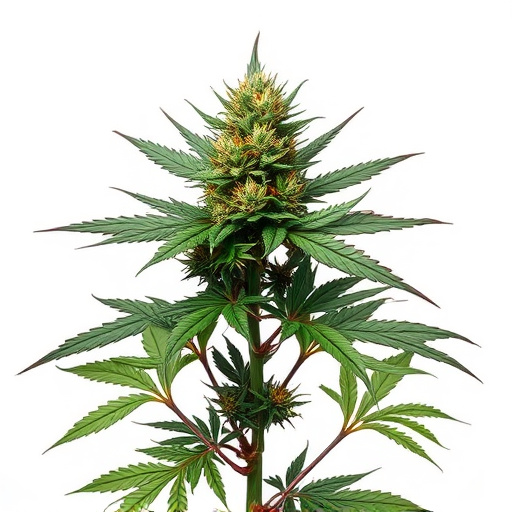
The mental and emotional effects of high-THC strains are a fascinating aspect of cannabis consumption, particularly for those who indulge in sativa cannabis strains known for their potent psychotropic properties. THC, or tetrahydrocannabinol, is the primary psychoactive compound responsible for the ‘high’ feeling associated with marijuana use. When consumed in higher concentrations, as found in many modern sativa strains, it can significantly impact an individual’s cognitive functions and emotional state.
Users may experience heightened creativity, increased energy levels, and a sense of euphoria, often described as a “mind high.” However, this enhanced mental state also comes with potential risks. Some people might feel anxious or paranoid, especially if they are unfamiliar with the effects or consume an excessive amount. The emotional response can vary greatly depending on individual tolerance, personality, and environment. For some, it may lead to a profound sense of relaxation and joy; for others, it could trigger stress or even fear. Understanding these variables is crucial when navigating the mental and emotional landscape of high-THC sativa cannabis strains.
Potential Health Risks and Considerations
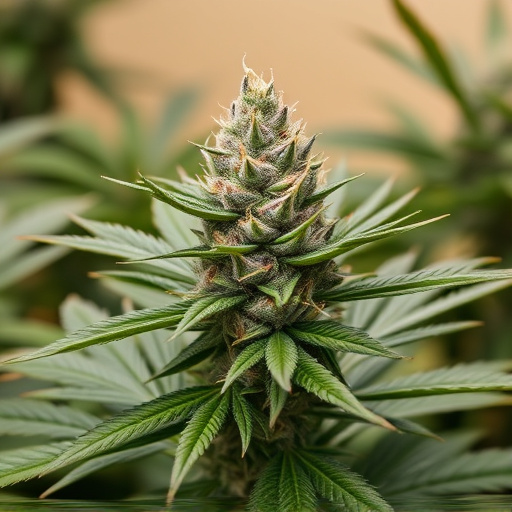
While high-THC strains can offer significant therapeutic benefits, it’s crucial to acknowledge potential health risks and considerations. The impact of THC on the mind is a complex matter; short-term effects may include heightened senses, increased creativity, and relaxation, but chronic use could lead to anxiety, paranoia, and mood disturbances in some individuals. This risk is particularly notable with potent sativa cannabis strains, known for their energizing and cerebral effects, which may exacerbate existing mental health conditions.
Physically, consuming high-THC products can result in dry mouth, red eyes, and increased heart rate. In rare cases, it may trigger dizziness or even panic attacks. It’s important to consume responsibly, starting with low doses, and choosing strains suitable for personal tolerance and needs. Regular breaks from use are recommended to allow the body and mind to readjust, especially when exploring high-THC sativa cannabis strains.
High-THC sativa cannabis strains significantly impact both the body and mind, offering both potential therapeutic benefits and health risks. Understanding their physiological effects on various systems, mental and emotional changes they induce, and associated considerations is crucial for informed use. While these strains can provide relief for specific conditions, it’s essential to be aware of their potency and navigate consumption responsibly, considering individual tolerances and consulting healthcare professionals when necessary.





